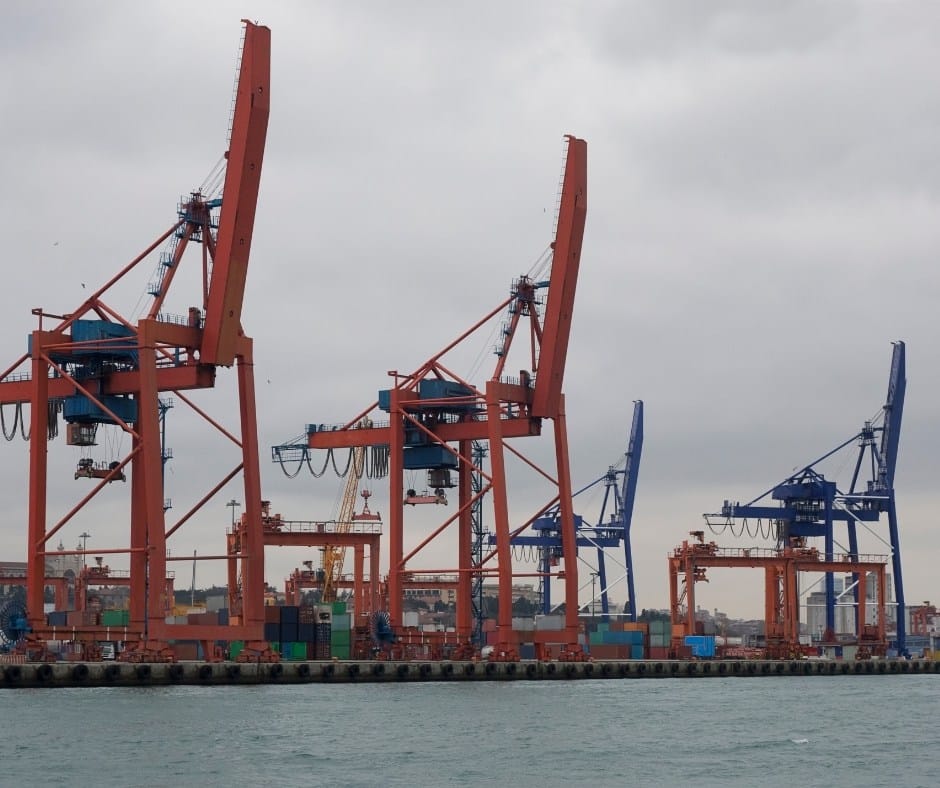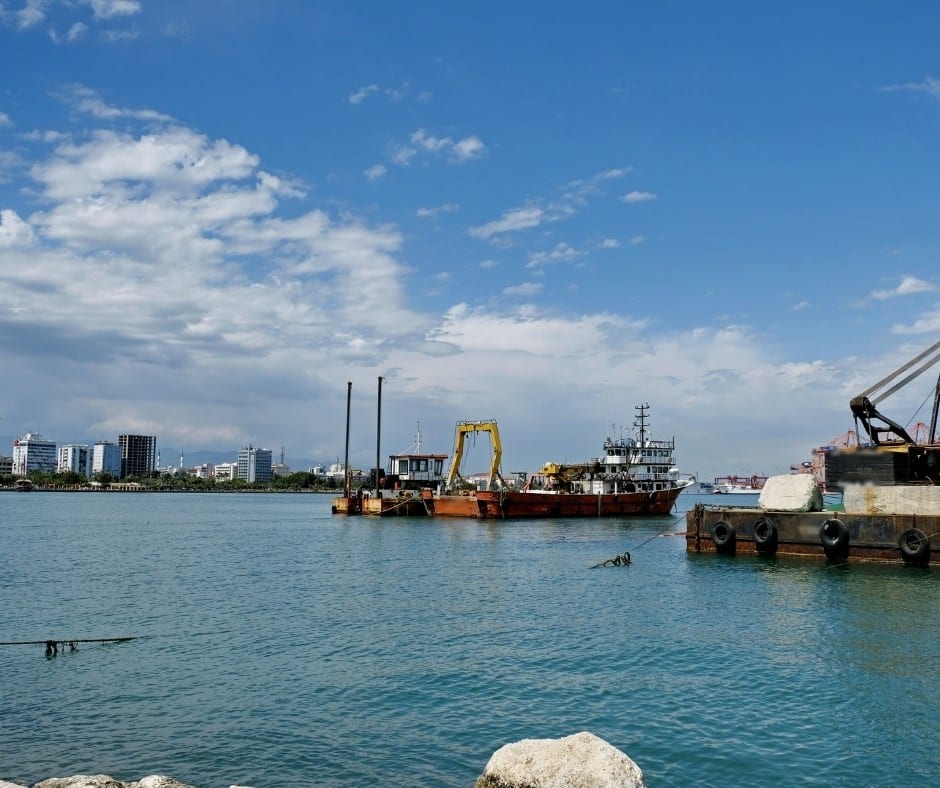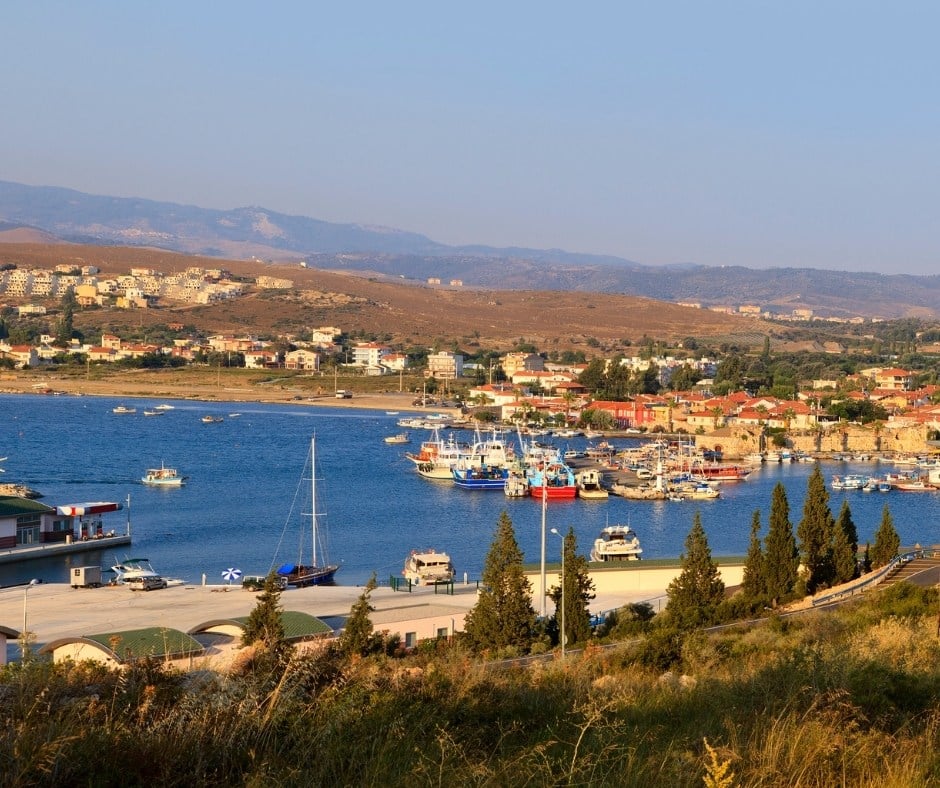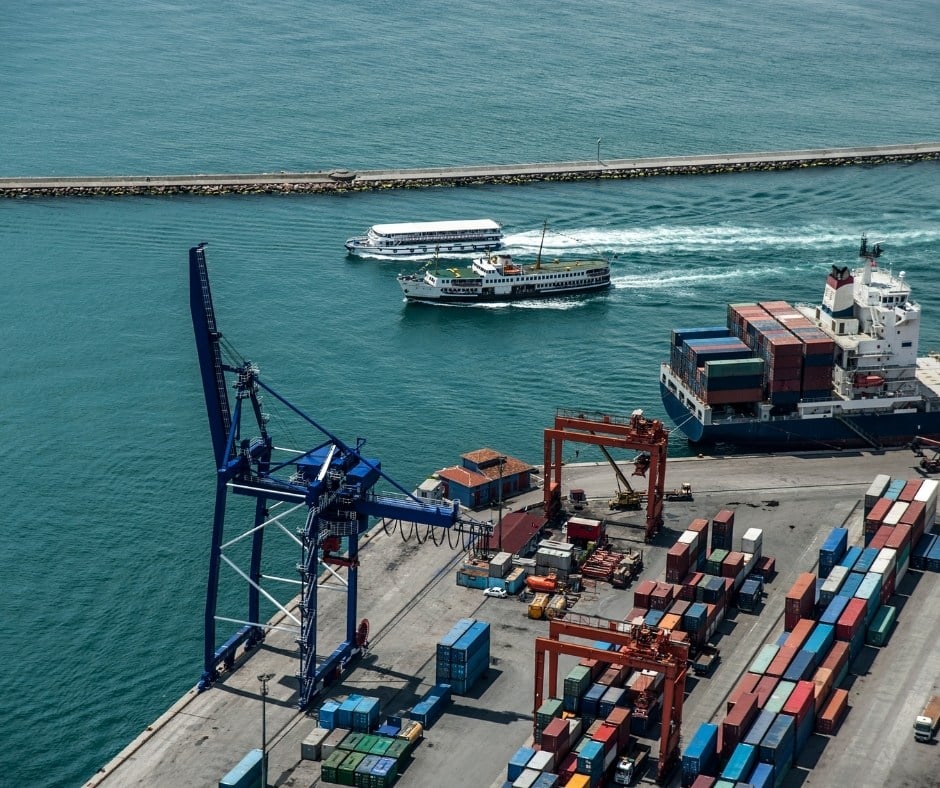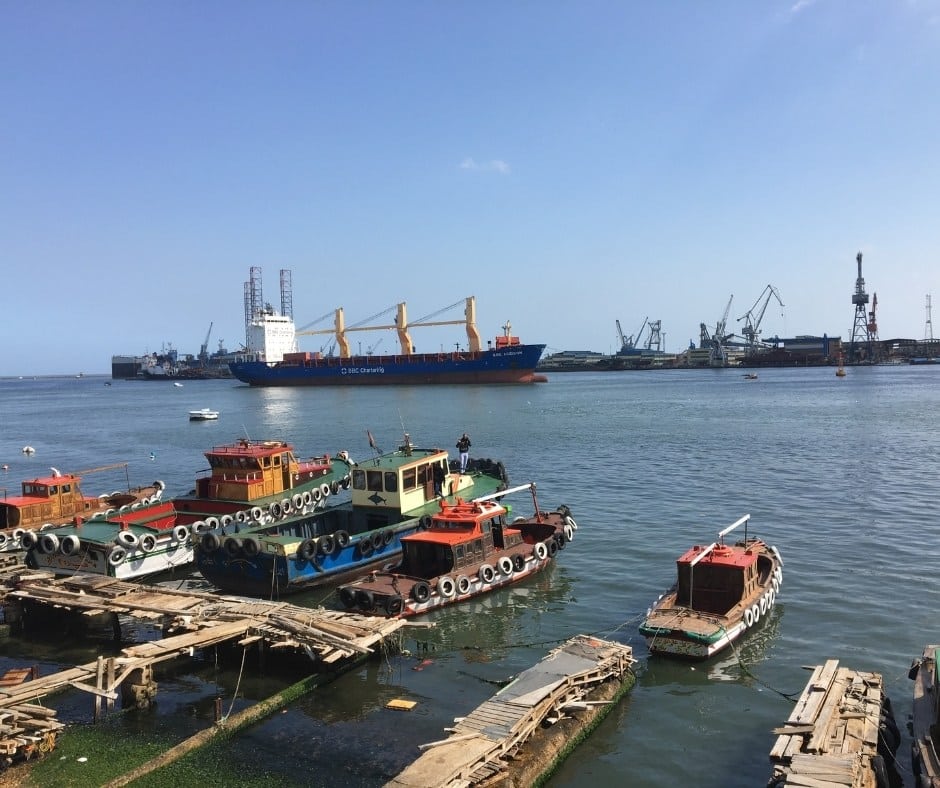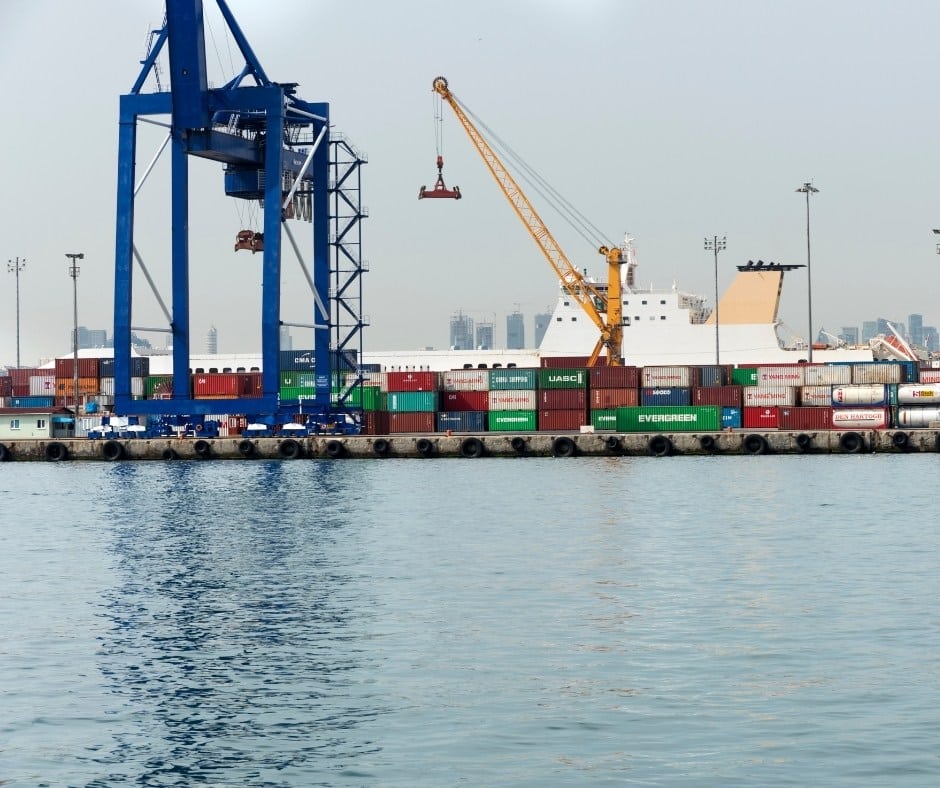6 Major Ports in Turkey
As a sea-friendly region, Turkey has a high significance in the international shipping arena. This features their natural blessing of lying on the Euro-Asia border.
The major ports in Turkey see record maritime traffic annually. The majority through the Mediterranean waters and the Black Sea.
Along with its ship-friendly coast, Turkey also has 1 224 vessels to its national fleet flag. This couples with the 39 thousand seafarers under their fleet for a major presence globally.
Each of these vessels indulges in close-coast or seagoing trade for oil and other cargo. The country sees 169 964 port visits including vessels of various sizes. A unique factor is Turkey’s contribution to almost 10% of the global ship recycling capabilities.
Their unique geographical location places them as major shipping partners of Germany and the UK. However, countries like Egypt and China also share a 0.46 and 0.41 connectivity index with Turkey.
In this article, we review the 6 major ports in Turkey and their contributions to the Turkish shipping trade. We also focus on identifying the geographical significance, identity, location, and codes. It includes the dominance of container and passenger movement in their shipping landscape as well.
1. Port of Haydarpaşa (Istanbul, Turkey)
UN/Locode: TRHAY
Latitude: 41.002025°
Longitude: 29.014765°
The port of Haydarpaşa serves as one of the oldest and most profitable within the Turkish limits. Its area extends over a range of 55 thousand square meters, giving it a large container handling ability. Before the rise of Mersin, this facility happens to be Turkey’s biggest for 2 decades.
At present, Haydarpaşa operates across 5 major terminals. A total of 22 berths for container and general cargo operations exist across various sizes. The establishment of this facility dates back to 1899 with modern cargo operations since 1922.
Cargo Handling
The average handling of cargo operations at Haydarpaşa closes at around 60 million MT. This comes with over 1200 sea-going vessels berthing across its shore every year. In addition to the 140 thousand TEU handling, Haydarpasa also berths close to 400 ro-ro vessels yearly.
2 large elevators for ro-ro handling worth 100 MT operate simultaneously for discharging. Moreover, the facility also features container handling cranes, ranging between 5 to 25 MT (17 in number).
Network and Layout
The container section of the Haydarpasa terminal extends over an area of 100,000 square meters. This includes the largest berth extending over 430 meters for super container vessels. In addition, a floating crane mobility system is an additional layout feature with 250 MT capacity.
The terminal has an in-house rail facility handling around 500 MT of cargo at once. This features rail wagons up to 16, moving in one stretch for standard TEU sizes.
2. Port of Mersin (Mersin, Turkey)
UN/Locode: TRMER
Latitude: 36.79745°
Longitude: 34.65117°
The second oldest in the line, the port of Mersin in Turkey has numerous changes to its working. At present, it exceeds the Haydarpasa by amounting to 2.2 to 2.5 million TEU every year. Such large container traffic is a result of the location adjacent to the Mediterranean waters.
The port of Mersin is a gateway for Turkey to unlock the shipping potential with Europe. In addition to the container facility, the terminals also deal with the bulk and break cargo.
The establishment of this port’s limits dates back to the year 1958. One of the biggest amongst the major ports in Turkey, Mersin spreads over 112 acres.
Cargo Handling
The terminals also have bulk handling capacities ranging from 10-15 million MT annually. Over 150 thousand vehicles through ro-ro vessels arrive every year as well. The alongside depth for the deepest berth goes up to 15.8 meters for cargo handling.
The terminals hold 12 SSG, 5 MHC, and 38 RTG operatable structures for container and cargo operations. Hence, their handling capacity varies 41 to 150 MT in staggers.
Network and Layout
In addition to the cargo side, the passenger terminal sees over 20,000 people every year. The terminals also have close and open warehouse facilities exceedingly over the 80,000-meter square. This includes state-of-art refrigerated cargo storage facilities too.
3. Port of Izmir (Umurbey, Turkey)
UN/Locode: TRIZM
Latitude: 38.45704°
Longitude: 27.15267°
The port of Izmir stands third in the order of size as well as longevity amongst the Turkish ports. Its start comes from the year 1959, operating in the Gulf of Izmir. The facility is spread through a big landmass of 902 thousand square meters, operating in container cargo.
Amongst the major ports under the TCDD, Izmir handles more than 60% of container volume. This makes it a major container cargo gateway for the union. The terminal has the capacity of handling more than 1 million TEU on yearly basis.
Cargo Handling
The terminals have a capacity of handling 10 million MT of bulk cargo of different kinds. This includes operations across 25 wharves spread over the map. In addition to their steady structures, the facility houses a floating crane with a 90 MT range.
In addition, 2 MHC units operate alongside for handling capacities of 100 MT. The conveyor system helps in handling the bulk cargo with silos operating within the limits of 70 thousand MT.
Network and Layout
The layout and expanse of this port have over 650 million USD in the pipeline for the near future. This includes doubling the area for both passenger and container arrival.
Over 500 thousand people through domestic and international traffic arrive yearly at Izmir. Their container handling facility also has 19 transtainers operating daily with 40MT limits. On average, the alongside berthing depths for layout varies between 11 to 13.5 meters.
4. Port of Eregli (Karadeniz Ereğli, Turkey)
UN/Locode: TRERE
Latitude: 41.27529°
Longitude: 31.409915°
Amongst the container-friendly major ports in Turkey, the port of Eregli is a major bulk-handling port. The facility has 2 major bulk terminals and 4 general cargo docks running 24-hours. The establishment of this small town stands from 560 BC, with major natural reserves of Coal.
Also popular as the Port of Erdemir, their ore terminals have the highest length of 400 meters. Meanwhile, the general cargo piers lay maximum at the 290-meter mark. The turning basin rounds off at a 400-meter outward diameter. Meanwhile, the alongside drafts vary between 13.5 to 14.1 meters.
Cargo Handling
The operational capacity at Erdemir goes up to 20 million MT of bulk cargo. This process originated with handling cranes having capacities of 2500 and 1500 MT rated every hour. The ore conveyors operate in the range of 2500 MT/hour, with a total terminal capacity of 15000 MT/day.
Erdemir also serves towing operations that have a service range of 100 MT. While terminal 1 restricts DWT to 60,000, terminal 2 goes up to 200,000 DWT ships.
Network and Layout
The port of Erdemir operates with 3 house tug boats and 1 pilotage facility in the vicinity. The inner anchorage distance comes as close as 0.5 NM from the nearest land area. Meanwhile, the Northern breakwaters have anchorage limits at 1.0 miles.
Most vessels at terminal 2 operate in the sunlight hours, owing to the large size. The warehouse facilities allow stare of goods up to 90 MT, with an area of 130 square meters. The network operates primarily through semi-automatic cargo operations for 8 to 24 hours of the process.
5. Port of Ambarli (Beylikdüzü, Turkey)
UN/Locode: TRAMR
Latitude: 40.966755°
Longitude: 28.689465°
The port of Ambarli serves a wide variety of bulk, liquid, and container cargo segments. Its establishment is off the port of Istanbul by under 25kms. The entire setup occupies an area of 10,000 square meters including operational and warehouse segments.
On average, Ambarli hosts 1900 to 2400 vessels across all sizes every year. The majority of these include ro-ro and container vessels treading the lines of Europe.
65% of these vessels are arrivals with the intention of unloading operations. Their Marport container terminal works with three berths, handling 1.9 million TEU on average.
Cargo Handling
At the Mardas terminal, the biggest berth has a length of 520 meters. This region has an alongside draft ranging from 13.5 to 15 meters. In comparison, the Marport terminal goes up to 16.5 meters alongside the draft. For Marport, the Westside has a dimension of 760 meters for the piers.
For cargo handling, the Mardas terminal handles an average of 650 thousand TEU for the last decade. The figure goes up to 1.5 million TEU for the Marport terminal at Ambarli. Marport works with 3 big gantries and 18 comparatively smaller moving cranes for operations.
Network and Layout
The layout of the Mardas terminal is big enough to accommodate outreach cranes up to 17. This pairs with a dozen mobile cranes for container discharging. Meanwhile, another major entity in the Kumport terminal has a more convincing reefer port network.
The storage facilities house more than 9000 TEUs along with 680 refer arrangements. The third terminal also has over 1.5 acres of storage space and a container station ranging from 2.5 acres.
6. Port of Gemlik (Bursa, Turkey)
UN/Locode: TRGEM
Latitude: 40.4274°
Longitude: 29.11552°
The Gemlik Port outshines the rest in the zone as the pivot of all industrial imports. It supports the North and the South zone with incoming container trade and raw materials too. The port is set at an elevation of 22 meters from the normal level, giving it a challenging climate too.
First, amongst the oldest major ports in Turkey, the establishment of Gemlik in1615 started sea operations. However, the modern passage for operations and other storage facilities dates back to the 1980s.
The facility holds a total of 8 berths for all kinds of cargo. Dealing with general cargo, the berths vary between 7 meters to 12 meters for the alongside depth.
Cargo Handling
The major cargo arrivals come through containers and vehicles reaching into the country. Hence, the facility sees between 340,000 to 370,000 TEU of container arrivals annually. This couples with 160,000 arrivals of roll-on roll-off vehicles at their bay too.
The shores at the Gemlik have a total length of 839 meters. Meanwhile, the operations proceed for 12 to 18 hours every day with extension requests acceptable.
The facility does not have fixed cranes but works with over a dozen of mobile ones. Meanwhile, the elevators for vehicle handling vary between 25 to 125 MT capacity for lifting.
Network and Layout
For the oil terminals in the network, the depth varies between 15.5 to 17 meters. These shores need the incoming vessels to have compulsory pilotage for arrival. A total of 250+ containers with refer requirements have storage options at the terminal.
Meanwhile, the storage area is mostly under the open exposure, sizing about 98,000 square meters. However, the total area for container stacking goes up to 150 thousand square meters. The local cargo network does not have railway tracks but mostly relies on motor vehicle transport.
Container Cargo Dominance in Turkey
With 11 679 100 TEU container movement, the shipping landscape of Turkey is decisive. This also finds aid from the extensive coastline ratio of 10.6 meters for every square kilometre of land. The major ports in Turkey act as the pivotal gateway for Asia’s trade connections across Europe.
Despite its smaller geography, Turkey still finds more than 2.5% share in global container calls. The figures are even higher for breakbulk cargo, going up to 4.7%.
Hence, completed or manufactured commodities occupy 80% of the total trade share. With the changing global landscape, Turkey has a -6.3% rate for shipping trade in 2020. However, the early quarters of 2021 overcome the deficit to ensure a sustainable process of growth.
You might also like to read:
- 10 Major Ports In Morocco
- 10 Major Ports In Brazil
- 10 Major Ports in France
- 10 Major Ports In The Philippines
- 10 Major Ports In China
Disclaimer: The authors’ views expressed in this article do not necessarily reflect the views of Marine Insight. Data and charts, if used, in the article have been sourced from available information and have not been authenticated by any statutory authority. The author and Marine Insight do not claim it to be accurate nor accept any responsibility for the same. The views constitute only the opinions and do not constitute any guidelines or recommendations on any course of action to be followed by the reader.
Do you have info to share with us ? Suggest a correction
Latest Maritime Knowledge Articles You Would Like:
Subscribe To Our Newsletters
By subscribing, you agree to our Privacy Policy and may receive occasional deal communications; you can unsubscribe anytime.



